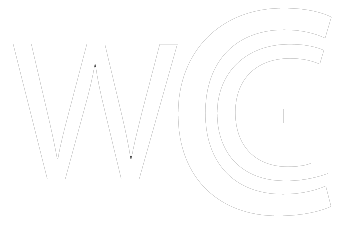The Top Trends 2025 Shaping Blockchain Utility: How Blockchains Are Adopting To Reflect the Future of Web3

The rise of blockchain and cryptocurrencies has been astonishing over the past 15 years. From unimaginable price surges to increasing regulatory acceptance and widespread adoption, blockchain technology is transforming into one of the worlds largest industries. According to the Global Adoption Index Report by Chainalysis, adoption peaked in Q1 2024, hitting its highest level in four years.
Today, billions of people have interacted with or heard about crypto, particularly younger generations, who make up the majority of users. However, the industrys progress often gets overshadowed by the misconception that crypto is just about speculative gains. While speculation has been the driver of the current bull market (and previous ones), the Web 3 industry is slowly switching to a more utility-minded development approach. This pivot ensures that blockchain technology continues to thrive long after the speculative frenzy fades.
This article, however, is not to criticize those searching for a quick profit but rather to explore the growing possibilities within the crypto space and offer a glimpse into what blockchain technology could achieve in the next five years. We explore the key trends and projects shaping Web3 innovation, including interoperability solutions, developer accessibility, security through staking, decentralized governance, and the integration of AI into blockchain ecosystems.
The Key Trends in Blockchain For 2025 And Beyond
The blockchain landscape has continued to evolve, with new concepts and ideas emerging every other year. Since the launch of smart contracts in 2015, blockchain-based innovations such as decentralized finance, NFTs, DePINs, liquid staking, bridges, and more, have seen massive growth both in value and adoption rates.
Projects such as Solana have given developers better accessibility, Polkadot has redefined governance as a utility, io.net established a decentralized computing network for AI startups, EigenLayer introduced restaking, and Agoric is solving the interoperability issue. Beyond the innovations, cryptocurrencies associated with these projects have also signaled a shift toward building a wholly integrated blockchain ecosystem for various industries, including gaming, healthcare, supply chain management, etc.
Below we focus on some of the leading trends in the past few years. We focus on projects that look to revolutionize the global blockchain industry in 2025 and possibly in the coming decade.
- Security through staking
One of the biggest talking points over the past two years has been Ethereum switching from a proof of work consensus mechanism to a proof of stake (POS). This year, one of the most discussed innovations in blockchain is the concept of restaking. Introduced by EigenLayer, this mechanism allows users to stake their tokens on the main blockchain and simultaneously secure other networks, enhancing overall security. EigenLayer has seen exponential growth since its mid-2024 mainnet launch, showing promise of a restaking frenzy in the coming years.
For example, in the Cosmos ecosystem, users can stake ATOM tokens with validators, which improves economic security. Restaking builds on this concept, enabling users to leverage the same staked assets across multiple networks. This approach not only fortifies network security but also offers new opportunities for yield generation.
Simply, restaking platforms allow users to rehypothecate staked tokens on the consensus layer to provide DApps that cannot be deployed on the main network and cannot utilize the settlement layer of the network with an established security framework. Embracing this trend could lead to better network security, enabling developers and users to mitigate and manage risks even when their DApps are still at the seed stage.
- Solving the interoperability challenge
A persistent obstacle in Web3 has been the siloed nature of blockchains. These networks operate in isolation, unable to communicate and share data seamlessly, limiting their potential applications and benefits. The fragmentation of decentralized applications (DApps) leads to restricted liquidity, poor user experience, and stifled innovation.
Several platforms and developers are working on solving this challenge by building interoperable solutions to connect multiple blockchains. Agorics Orchestration framework offers a unique and practical approach.
Built on the Cosmos ecosystem, Agoric uses the Inter-Blockchain Communication (IBC) protocol to enable decentralized applications to interact across chains with minimal friction. For example, Agorics Orchestration API allows developers to integrate native Bitcoin and Ethereum into Cosmos without requiring cumbersome token swaps, improving both usability and composability.
Agoric focuses on accessibility. By using JavaScript as its primary programming language, Agoric opens up blockchain development to millions of developers worldwide. This approach makes it easier for developers to create secure, interoperable smart contracts that operate seamlessly across multiple chains.
With tools like the Orchestration API and the $BLD token, Agoric enables developers to build applications that bridge previously isolated ecosystems. From facilitating cross-chain asset transfers to automating multi-chain workflows, Agoric helps to streamline processes that were once complex and time-consuming. This focus on usability and composability significantly solves one of Web3s biggest challenges: creating a unified blockchain experience.
- Development accessibility
Solana has emerged as one of the most developer-friendly blockchains in 2024, surpassing Ethereum in developer activity for the first time. A report by Electric Capital recorded an astonishing 83% growth from last year. This positions Solana as the fastest-growing large ecosystem, with over 2,000 monthly active developers in 2024.
The growth has majorly been a result of the booming memecoin ecosystem, but the ease of development on the blockchain played a key role. In comparison to Ethereum, Solanas appeal to developers lies in its efficiency, scalability, and low transaction costs. This has allowed developers to build cost-effective applications, enhancing the creativity and innovations on the platform.
This trend underscores the importance of tools that simplify blockchain development. Agorics JavaScript-based smart contracts align with this direction by enabling over 17 million JavaScript developers worldwide to contribute to Web3 ecosystems. For blockchain to move from a speculation-driven industry to a utility-based ecosystem, driving development activity is fundamental.
- Governance as a utility (DOT)
Decentralized governance is reshaping how communities interact with blockchain projects. Polkadot exemplifies this by allowing stakeholders to have the power to participate in the decision-making process by voting on proposals and electing representatives. Earlier in the year, Polkadot stakeholders voted for the DAO-backed Referendum #747, which introduced Polkadot 2.0 through key technical advancements like Async Backing, Agile Coretime, and Elastic Scaling, demonstrating the communitys central role in steering Polkadots identity and direction.
The network also includes an on-chain Treasury that allows the community to vote on how the capital is allocated and the social organization of the network, helping the businesses with the highest potential to grow and flourish within the network.
Instead of leaving control to a few developers and validators and the voting mechanisms to the community, many blockchains are restructuring to fully decentralized decision-making. This could prove a major turning point in enhancing the utility of blockchain technology across global industries and help the community direct the future of the network. Such frameworks promise greater inclusivity and resilience in blockchain ecosystems.
Why These Blockchain Trends Matter
These innovations are not just technological milestones, they reflect blockchains evolution toward practical utility. Restaking ensures robust network security, interoperability opens new possibilities for cross-chain applications, and developer-friendly tools lower barriers to entry. Decentralized governance, meanwhile, gives communities the power to shape the networks they rely on.
Projects like Eigenlayer, Solana, and Agoric are leading in tackling blockchains biggest challenges. By integrating these trends into a cohesive ecosystem, they provide a glimpse of Web3s potential to revolutionize industries from gaming and finance to healthcare and supply chains.
Conclusion
As blockchain evolves beyond its speculative beginnings, these trends mark a transition to substance and utility. By addressing fundamental challenges like security, interoperability, and accessibility, the next wave of blockchain innovations will open the doors for sustainable growth and real-world impact. Blockchains future lies not in fluctuating prices but in its ability to revolutionize industries and empower users globally. The list above is in no way conclusive given the rapid changes we witness in blockchain every other day. As emerging fields like DePINs, DeAI, and SocialFi gain traction, the possibilities for blockchain integration across sectors continue to expand. Now is the time to engage, build, and shape the decentralized world of tomorrow.
Text source: ZyCrypto










